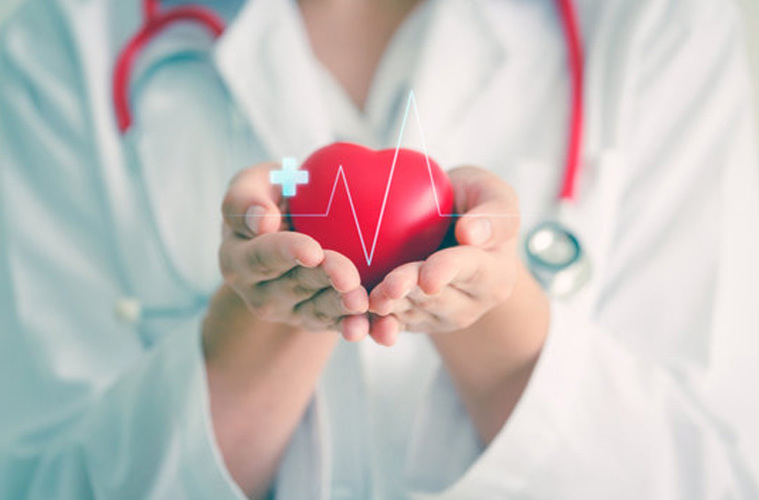
Cardiology is the branch of medicine that deals with the treatment of diseases affecting the heart and blood vessels. It deals with the diagnosis and treatment of such conditions as congenital heart defects, coronary artery disease, electrophysiology, heart failure, valvular heart disease.
Doctors specialized in this branch are called as cardiologists. Subspecialties in the cardiology field include cardiac electrophysiology, echocardiography, interventional cardiology and nuclear cardiology.
Cardiologists treating children are called pediatric cardiologists.
Below are some of the medical conditions treated by cardiologists:
- Chest pain or Angina: Chest pain may be a symptom of a heart attack or coronary artery disease, but it may also occur due to asthma, pneumonia, muscle strain, anxiety, or digestive problems (e.g., heartburn, ulcers, or gallstones).
- Heart attack. Sudden blockage of the supply of blood and oxygen to a portion of the heart muscle. Treatments for heart attack work to open the blocked artery and restore blood flow as quickly as possible, in order to limit damage to the heart muscle.
- Hypertension: Blood pressure above 139 mm Hg systolic or above 89 mm Hg diastolic is considered high blood pressure. High blood pressure increases the risk of heart attack, stroke, and kidney disease.
- High cholesterol. A total cholesterol level above 240 mg/dL is considered high cholesterol. Total cholesterol between 200 and 239 is considered borderline high. High cholesterol increases your risk of heart disease. Diet and medication can bring down cholesterol levels and reduce heart disease risk.
- Arrhythmia. Any disorder of heart rate or rhythm. Examples of arrhythmias are tachycardia (faster-than-normal heartbeat) and bradycardia (slower-than-normal heartbeat).
- Coronary artery disease (CAD). Narrowing and hardening of the arteries that supply blood to the heart due to the buildup of plaque in the artery wall. CAD is the most common type of heart disease. The reduced blood flow to the heart can cause angina (chest pain) and heart attack and can contribute to heart failure and arrhythmias.
- Atherosclerosis. The buildup of fatty deposits (plaques) in the arteries. The narrowing and stiffening of arteries due to plaque buildup can interfere with blood flow, causing pain in oxygen-starved organs. If a plaque in a coronary artery ruptures, it can cause a heart attack or stroke.
- Congestive heart failure. A condition in which the heart is weak and has lost some ability to pump blood. Symptoms include shortness of breath, persistent coughing or wheezing, fatigue, and swelling in the feet, ankles, legs, or abdomen.
- Syncope (fainting). A temporary loss of consciousness due to a drop in blood flow to the brain. The episode is brief and is followed by a rapid and complete recovery. Syncope may be caused by a sudden drop in blood pressure, extreme emotional states, severe pain, certain medications, abnormal heart rhythms, or other reasons.
- Claudication. Claudication is pain in the calf or thigh muscle that occurs with exercise and is relieved by rest. The pain is caused by poor blood flow due to narrowing or blockages affecting the arteries that carry blood to the legs. Claudication is the most common symptom in people who have peripheral artery disease.
- Aneurysm. A balloon-like bulge in an artery. If a bulge stretches the artery too far, the vessel can burst. Aneurysms can form in arteries of all sizes, but the most serious are those that affect the large blood vessel that carries blood from the heart to other parts of the body (the aorta), the heart’s pumping chamber (ventricle), and arteries that supply blood to the brain.
- Cardiomyopathy. A disease of the heart muscle in which the muscle tone is damaged and the heart’s ability to pump blood is impaired. The most common type is dilated cardiomyopathy, in which one or more of the heart’s chambers is enlarged and its pumping becomes less forceful. Other types include hypertrophic cardiomyopathy, in which the walls of the heart muscle thicken, and restrictive cardiomyopathy, in which the heart muscle becomes more rigid.
- Congenital heart disease. Abnormalities in the heart’s structure and function that are caused by disordered or abnormal heart development before birth. While some abnormalities never cause any problems, many of these defects need to be followed carefully and require treatment (medication or surgery). The most common congenital heart defect is a ventricular septal defect, a hole in the wall that separates the left and right ventricles of the heart.
- Peripheral artery disease (PAD). Peripheral artery disease is atherosclerosis (narrowing or blockage of arteries due to the buildup of fatty deposits) affecting the arteries that supply blood to the legs and feet.
- Heart murmur. A rasping, whooshing, or blowing sound produced by turbulent blood flow through the heart valves or near the heart. Murmurs are most often caused by defective heart valves.
- Atrial fibrillation. A heart rhythm disorder in which the upper chambers of the heart (atria) contract rapidly and in a disorganized manner. Atrial fibrillation increases the risk of blood clots that can block the flow of blood to the brain, lungs, or other organs.